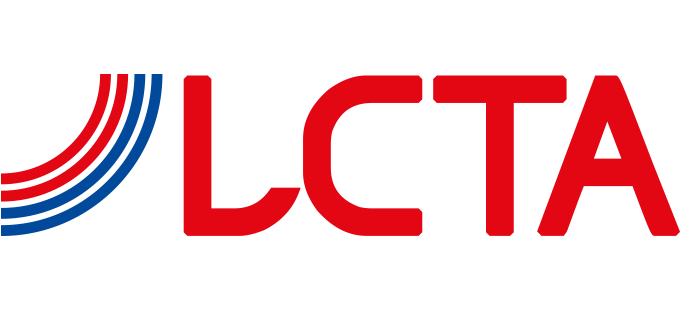Implementation Of The Swiss Tax Reform In Ticino
Contribution by Ernst & Young.

Following the adoption of the Federal Act on Tax Reform and AHV (Old-Age and Survivors Insurance) Financing (TRAF) by popular vote in May 2019, all Swiss cantons are required to align their cantonal tax laws and ensure conformity with TRAF-regulations. Since the new measures are not all mandatory, the cantons have some discretion when adopting the new regulations, depending on the cantonal requirements and interest.
The Ticino Cantonal Government presented its proposal on how to implement TRAF in Ticino in a press conference on 10 July 2019. The new rules will enter into force as of January 2020, so planning for the change, based on the details that are published, is finally possible.
Mandatory Measures
Abolishment of preferential tax regimes
Like all other cantons, Ticino must abolish tax privileges for holding companies, domicile companies and mixed companies. In 2016, only 3.7% of all taxpayers were taxed according to a preferential tax regime. However, these companies contributed over 20% of the annual tax revenue generated by legal entities (CHF 144 Mio.) and are important for Ticino. Therefore, the Ticino Government is proposing a set of internationally accepted measures to replace certain tax regimes and to maintain the attractiveness of the Canton from a tax perspective.
Disclosure of hidden reserves
The abolishment of preferential tax regimes would result in the ordinary taxation of hidden reserves that were generated during the time that the privileged taxation applied. To mitigate this effect, cantons are required to introduce transitional rules. For that purpose, the so-called “two-rate system” will be introduced. Hidden reserves, including any self-created goodwill, at the date of transition from privileged to ordinary taxation, can be confirmed by the tax authorities upon request. Profits relating to the realization of hidden reserves that were generated under a privileged tax regime are subject to a separate tax rate over a period of 5 years. Ticino plans to apply a competitive tax rate of 1% to these profits. At the same time, the current step-up practice, set out in circular letter 29/2017, will be abolished from 2020. This means that the two-rate system will also be applied to companies that disclosed hidden reserves under the circular in the past.
Since trading companies often benefitted from a special tax regime, this measure is essential for them. It is important to start analyzing the opportunities presented by the transitional rules by evaluating the various scenarios. The different options for application of the transitional rules may present different benefit outcomes for a company. Amongst others, aspects to be considered include timing, valuation method, and the application of other available measures. EY has developed a comprehensive tool to simulate potential outcomes based on a variety of different scenarios and parameters. Using this tool, we are able to assist in identifying the most beneficial option.
In the case of a migration to Switzerland, the so-called step-up system is applied. Hidden reserves, confirmed by the tax authorities, can be tax effectively depreciated. According to the Ticino Cantonal Government proposal, the tax-free disclosed hidden reserves can be depreciated annually over a period of 10 years.
Patent box
According to federal legislation, all cantons must introduce a so-called “patent box”. This measure provides tax relief of a maximum of 90% of the income derived from patents and similar rights at cantonal and communal level. Ticino plans to make full use of this measure by introducing the maximum relief of 90%. However, as trading companies are typically not patent owners, this measure is unlikely to be too relevant for trading companies.
Overall tax relief
The Canton of Ticino intends to introduce a maximum tax relief of 70%. This is a very positive development, as a lower relief limitation was previously planned. With the 70% limit, the Canton of Ticino reaches the maximum possible tax relief in order to maintain the attractiveness compared to other Swiss cantons.
Optional measures
Capital tax relief
Companies with a preferential tax regime usually benefit from a reduced capital tax rate, which is often the case for trading companies. To mitigate the increase from the reduced capital tax rate when moving to ordinary taxation, the cantons can introduce a capital tax relief on patents and similar rights, qualifying participations, and intra-group loans.
Since 2018, a capital tax relief on qualifying participations has been available in Ticino. In addition, the Government has proposed to introduce capital tax relief on qualifying patents and similar rights. Regarding intra-group loans, the Government has decided (at this stage) not to implement a specific deduction. However, such a measure may still be introduced in a second step should this be necessary.
The change from privileged to ordinary taxation generally results in a significant increase of a trading company’s capital tax burden. Such increase might be mitigated in case a company can apply for additional tax relief that will be introduced for capital tax purposes.
R&D super deduction
The reform allows for the introduction of a super deduction on domestic R&D costs at the cantonal level. This measure aims at promoting R&D activities. Cantons may allow the deduction of up to 50% of qualifying R&D costs from the taxable income. In order to promote and develop R&D activities in its territory, the Ticino Cantonal Government has decided to propose the maximum deduction rate of 50%. This measure should have little impact for trading companies as they are typically not carrying out R&D activities in Switzerland.
Notional interest deduction (NID) on surplus equity
The notional interest deduction (NID) is basically granted on equity which, in the long-term, exceeds the average equity required for business operations. It is a measure only intended for application in “high-tax” cantons so will not be implemented in Ticino as Ticino does not fall under the definition of a high-tax canton.
Additional measures
In addition to the mandatory and optional measures outlined above, the canton of Ticino has decided to implement further corporate tax measures.
Reduction of cantonal tax rate and cantonal multiplier
In order to maintain the tax attractiveness of Ticino, the corporate tax rate will be gradually decreased from 9% today to 8% in future for the period 2020 to 2024. From 2025 onwards, the rate will be further reduced to 5.5%. The cantonal multiplier will be reduced from 100% today to 98% for the period 2020 to 2024. From 2025 onwards, it will be further reduced to 96%.
These measures should lead to a future envisaged ETR of approx. 13.7% in the most attractive communes, which should allow the current tax privileged companies to almost maintain their current taxation level.
Differentiated communal multiplier
Today the canton Ticino applies one multiplier for both individuals and legal entities. From 2025 onwards, communes will be entitled to introduce different communal multipliers. The different multipliers are subject to the following conditions: (i) the communal multiplier must not be below 40% for both individuals and legal entities, and (ii) the spread between the communal multiplier for individuals and legal entities must not exceed 20%.
Increased creditability of corporate income tax against capital tax
The creditability of corporate income tax towards capital tax will be increased from 10% to 16% (as from 2025).
Conclusion
Trading companies, currently benefitting from a privileged tax regime such as the mixed company regime, should carefully consider the potential risks and opportunities arising from the upcoming tax reform. In particular, the fact that the tax regimes will be abolished requires them to properly analyze the different options available under the transitional rules and other new measures to be implemented. Any review should include the quantification of the financial implications, taking into account a number of parameters including, but not limited to, financial forecasts, hidden reserves, and goodwill, together with the application of the various measures and relief limitations. To be effective, planning and implementation should be completed before the end of 2019. Therefore, we recommend you take action now.
Cover Image © Fabio Marchese – Unsplash

